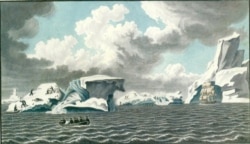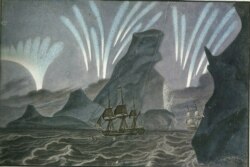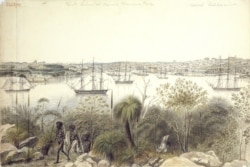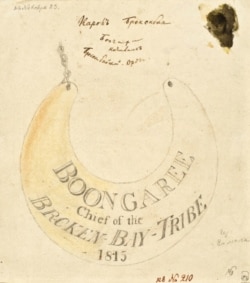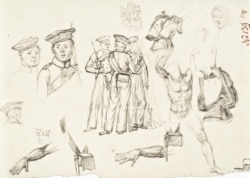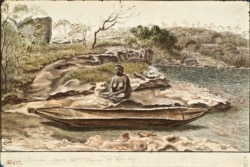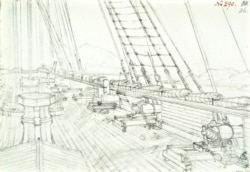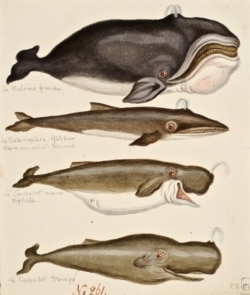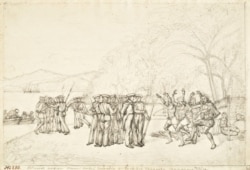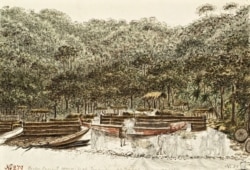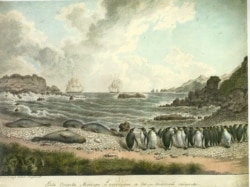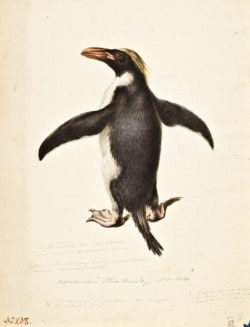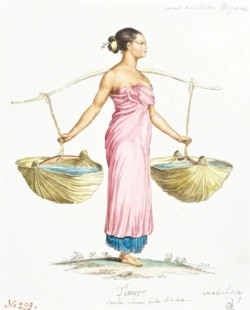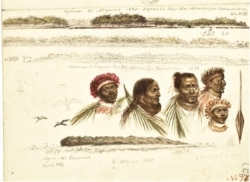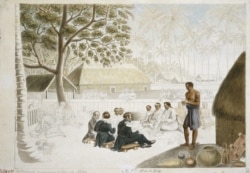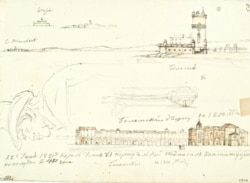These are illustrations by artist Pavel Mikhailov (1786-1840), made while in New Zealand in 1820.
Mikhailov was one of 190 crewmen aboard two Russian vessels -- the Vostok and the Mirny -- that set sail from Kronstadt, near St. Petersburg, in July 1819 to discover whether a continent existed at the bottom of the world.
That mission was successful -- though Britain and Russia dispute whose explorers first sighted Antarctica proper.
But the state-funded Russian ships also spent months exploring the islands of the Pacific, as well as Australia and New Zealand.
Artist Mikhailov, whose job was to document the adventure, closely followed his commission from Russia’s Academy Of Arts: “Ensure everything drawn be an accurate representation of what you see.”
A member of the expedition recalled nearly the entire night sky being “covered with rainbow-colored stripes that twisted sinuously with the speed of lightning, running from south to north, and shimmering with different colors.”
The expedition set off from Russia in July 1819 and returned after two full years of adventure, in July 1821.
While in Australia, the Russian commanders met with the governor of New South Wales. An English-speaking member of the Russian expedition served as an interpreter for the meeting.
The sailors were selected for being in “excellent health, under 35 years of age, having knowledge of shipbuilding and, finally, the ability to shoot rifles well.”
Although most interactions the Russians had with local inhabitants were peaceful, one exchange ended with Polynesian women “running out of the woods to the seaside and lifting their clothes to show us their backsides and slapping them while others danced.”
After the bum-slapping send-off, Bellingshausen noted, “Some of the men asked permission to punish the islanders for insolence, to shoot at them, but I did not agree to this.”
The circular objects on the right are crayfish pots, which were weighted with rocks, set with bait, and lowered onto the seafloor from canoes.
The sketches from the quiet fishing and trading settlement of central New Zealand capture a fleeting moment in Maori culture of the time. Seven years after the Russians left, the Maori drawn by Mikhailov were reportedly massacred by a rival tribe.
One seal was caught and brought aboard the ship but died on the journey to Russia.
Penguins were a welcome source of fresh meat for the crews. The blubbery birds were soaked in vinegar, then added to porridge or served with cabbage. According to Bellingshausen, even well-fed officers were fond of the penguin meat.
After more than a year in the chilly southern oceans, the Russian expedition turned north for home. Mikhailov continued to sketch as they passed through the lush tropical islands of the Pacific.
Although the epic sea adventure is virtually unknown outside of Russia, one lasting legacy of the journey is a sea lapping at the shores of Antarctica today that was named after the commander of the expedition -- the Bellingshausen Sea.








